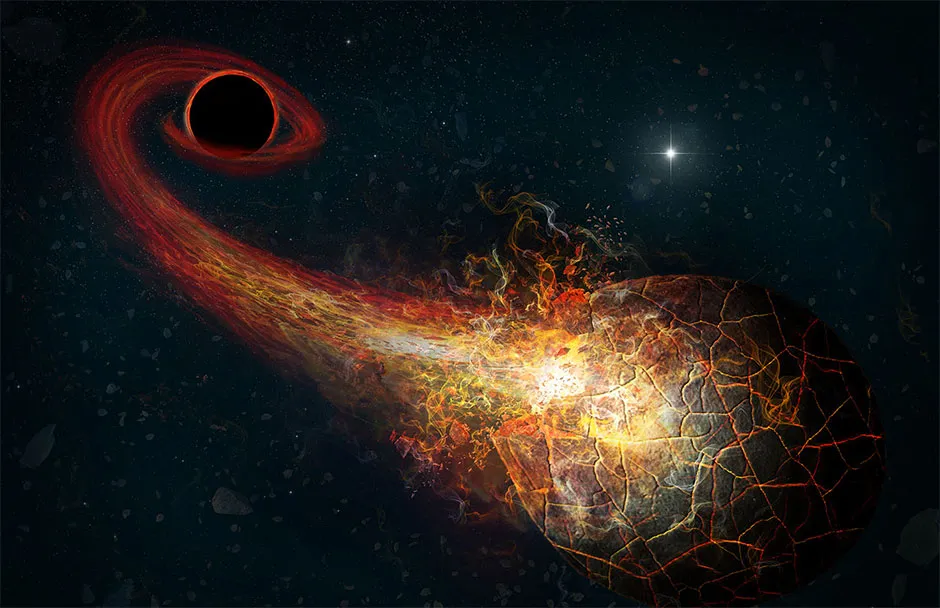Astrophysicists have suggested that the hypothetical Planet Nine could be a tiny black hole, and they’ve proposed a way to find out.
Planet Nine has never been seen directly. But the existence of a ninth planet orbiting our Sun could explain certain features of the outer Solar System, such as the clustering together of icy rocks called ‘trans-Neptunian objects’ with similarly tilted orbits.
Last year, scientists in the UK and US suggested that Planet Nine, which is also known as Nibiru, could instead be a primordial black hole. These as-yet-unseen black holes are thought to have formed a fraction of a second after the Big Bang. If Planet Nine was such an entity, it would be about the size of a grapefruit, with a mass of five to ten times that of Earth.

Now, two astrophysicists at Harvard University, US, have suggested a way to investigate this: look for the bursts of electromagnetic radiation, or ‘accretion flares’, that would be produced as this black hole ripped apart and swallowed any nearby icy objects.
The authors propose using the upcoming Legacy Survey of Space and Time (LSST) to look for the accretion flares. The LSST will use a 3.2-gigapixel camera at Chile’s Rubin Observatory to photograph the entire visible sky every few nights for 10 years.
Read more about black holes:
- Mysterious object may be smallest black hole ever found
- Researchers verify ‘extremely odd’ black hole physics
“LSST has a wide field of view, covering the entire sky again and again, and searching for transient flares,” said study co-author Prof Avi Loeb. “Other telescopes are good at pointing at a known target, but we do not know exactly where to look for Planet Nine. We only know the broad region in which it may reside.”
“The outskirts of the Solar System is our backyard,” adds Loeb. “Finding Planet Nine [would be] like discovering a cousin living in the shed behind your home [who] you never knew about.”
Reader Q&A: How big could a black hole get?
Asked by: Vanessa Taylor, Nottingham
There is no theoretical upper limit to the mass of a black hole. However, astronomers have noted that the ultra-massive black holes (UMBHs) found in the cores of some galaxies never seem to exceed about 10 billion solar masses. This is exactly what we’d expect from the rate at which we know black holes grow, given the time that’s elapsed since the Big Bang.
Furthermore, recent studies suggest that UMBHs cannot physically grow much beyond this anyway, since they would then begin to disrupt the accretion discs that feed them, choking the source of new material.
Read more:
